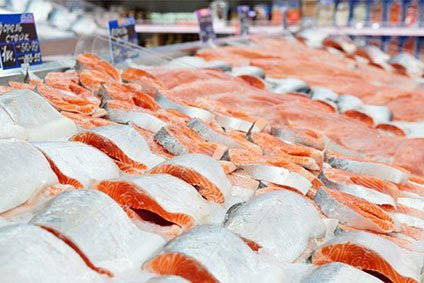
The US Food and Drug Administration granted its first approval for a genetically engineered animal destined for human consumption when it approved AquaBounty Technologies’ AquAdvantage salmon for sale and consumption in the country.
The AquAdvantage salmon is engineered to grow faster than conventional salmon and is produced in land-based aquaculture systems.

Discover B2B Marketing That Performs
Combine business intelligence and editorial excellence to reach engaged professionals across 36 leading media platforms.
After “thorough” analysis of the data presented by AquaBounty, the FDA concluded food from the fish is safe to eat, Dr. Bernadette Dunham, the director of the regulator’s Center for Veterinary Medicine, said. “The FDA has thoroughly analysed and evaluated the data and information submitted by AquaBounty Technologies regarding AquAdvantage Salmon and determined that they have met the regulatory requirements for approval, including that food from the fish is safe to eat.”
The FDA said food from AquAdvantage salmon is “as safe to eat and as nutritious” as food from non-genetically engineered Atlantic salmon. The regulator said there are no “biologically relevant” differences in the nutritional profile of AquAdvantage salmon compared to other farm-raised Atlantic salmon.
The FDA did attach some conditions AquaBounty must meet. The AquAdvantage salmon must be raised in land-based and contained hatchery tanks in two specific facilities in Canada and Panama. The approval does not allow AquAdvantage Salmon to be bred or raised in the US. The FDA said that the approval of the AquAdvantage salmon “would not have a significant environmental impact”.
AquaBounty CEO Dr. Ronald Stotish welcomed the approval. “AquAdvantage Salmon is a game-changer that brings healthy and nutritious food to consumers in an environmentally responsible manner without damaging the ocean and other marine habitats. Using land-based aquaculture systems, this rich source of protein and other nutrients can be farmed close to major consumer markets in a more sustainable manner,” he said.

US Tariffs are shifting - will you react or anticipate?
Don’t let policy changes catch you off guard. Stay proactive with real-time data and expert analysis.
By GlobalDataWhile it has not received approval to open fish farms for the genetically-engineered salmon in the US, AquaBounty nevertheless suggested the approval could act as a stepping stone to the development of an “economically viable” domestic salmon industry. “The US currently imports over 90% of all the seafood, and more specifically over 95% of the Atlantic salmon, it consumes. AquAdvantage salmon will offer the opportunity for an economically viable domestic aquaculture industry while providing consumers a fresh and delicious product,” the company said in a statement.
When the AquAdvantage salmon hits the shelves in the US, it will not be required to flag the fact it is produced using genetically engineered fish. Under existing legislation, the FDA can only require the labelling of GMOs if there is a tangible difference in the nutritional profile of the product – and the regulator found no such difference with AquAdvantage salmon.
“We recognise that some consumers are interested in knowing whether food ingredients are derived from GE sources,” said Dr Susan Mayne, director of the FDA’s Center for Food Safety and Applied Nutrition. “The FDA is issuing two guidance documents that explain how food companies that want to voluntarily label their products can provide this information to consumers.”
Responding to the news, lobby group Center for Science in the Public Interest said the approval would have a “negligible” impact on US consumers. “It will take months for AquaBounty to produce and export GE salmon for consumers to purchase. When they are at full capacity, the volume of imported GE salmon will be merely a drop in the bucket of salmon purchased on a yearly basis,” Gregory Jaffe, the CSPI’s biotechnology director, said.
However, noting the FDA does not require the salmon to be labelled, Jaffe insisted the marketing of genetically-engineered salmon products must be transparent. “Consumers who want information about the GE salmon should be able to obtain it, either on the label, in printed materials associated with the product, on a website, or through other communications,” he stressed.





